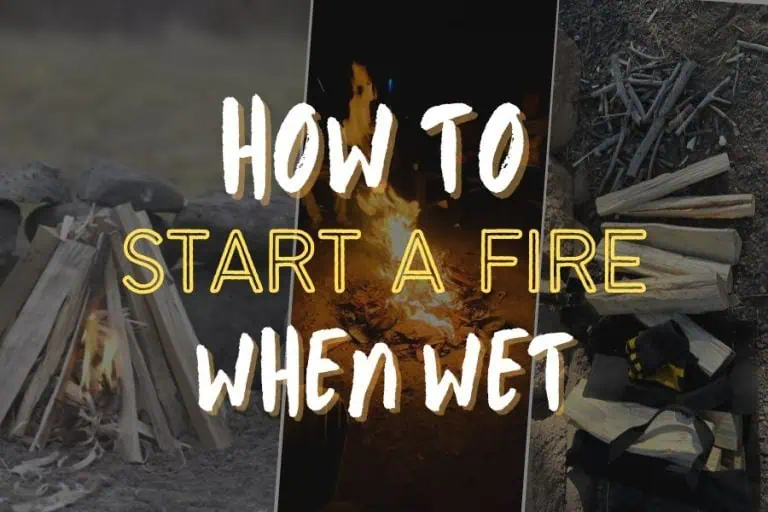Picture this – you’re halfway to camp when the clouds start rolling in.
Suddenly the rain starts pouring and everything and everyone on your fun outdoor adventure is getting drenched, including yourself!
Whether you’re on a longer backpacking trip or a casual outdoor excursion, it’s likely the only thing you want by the time you get to camp is a dry tent and a warm fire.
Even though it seems impossible, you can start a campfire when everything around you is wet, you just have to be smart about it.
Check out our tips for starting a campfire, even in the most rain-drenched conditions:
Find Dry Kindling
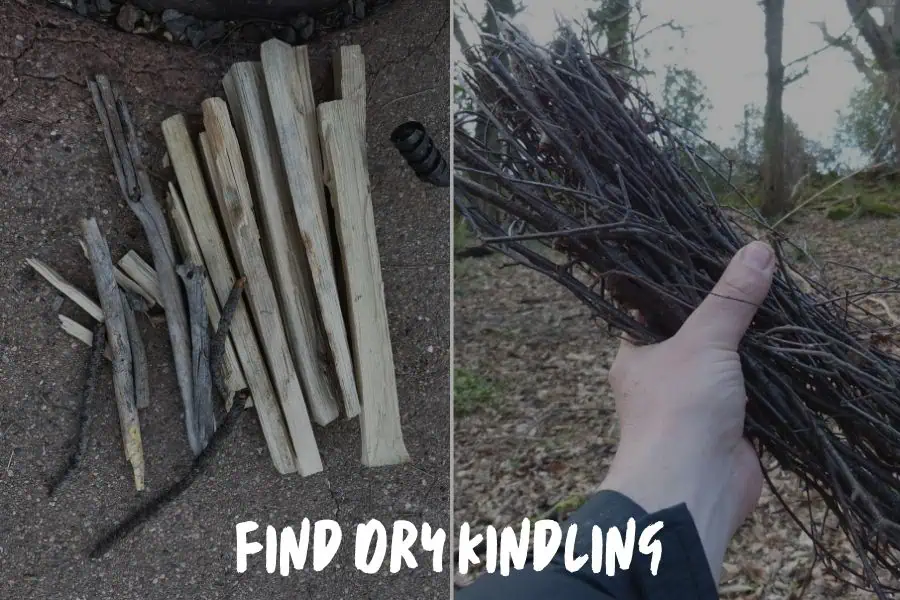
When everything is wet, finding dry kindling can seem impossible, but never fear!
There are usually hidden dry spots along the trail if you know where to look.
Look under thick tree cover, fallen logs, or even large rocks where branches might be shielded from the worst of the rain.
You can do this when you get to the campsite, but it’s an even better idea to plan ahead.
As you hike, keep an eye out for potential dry tinder and store it away in a dry spot like your backpack or wrapped in a camping tarp.
Being prepared ahead of time will make starting your fire that much easier.
Peel Off the Bark
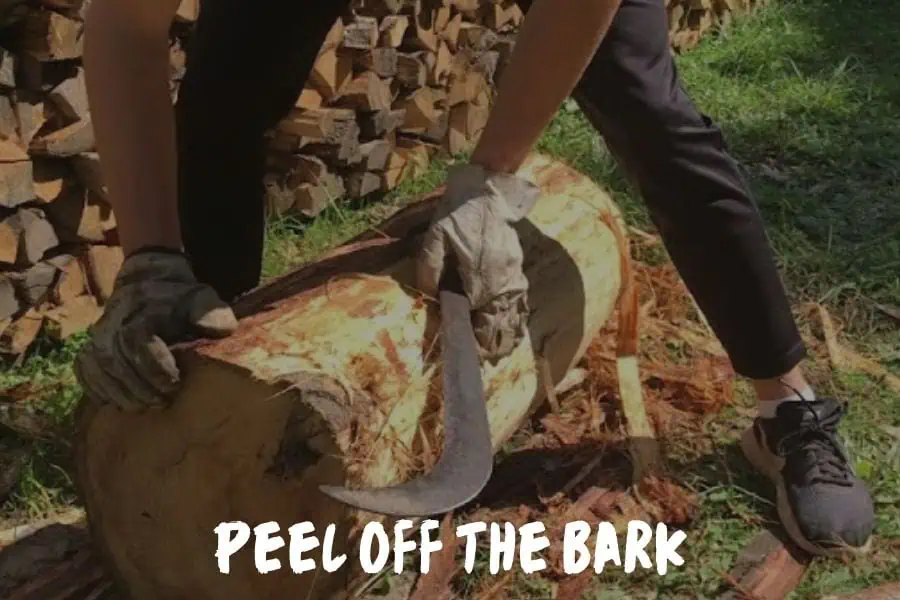
Since it’s on the surface, bark is always the first layer to absorb rain. However, the wood can sometimes remain dry beneath it.
Very carefully, use a knife or sharp tool to peel away the outer layer of wet bark.
If the rain hasn’t been going for too long, this will likely expose drier wood underneath.
The dry wood you’ve discovered can be shaved down into smaller pieces, or used as tinder depending on its size.
This stuff can be amazing fire-starting material, you just have to work a little bit to find it!
Make Smaller Pieces of Wood
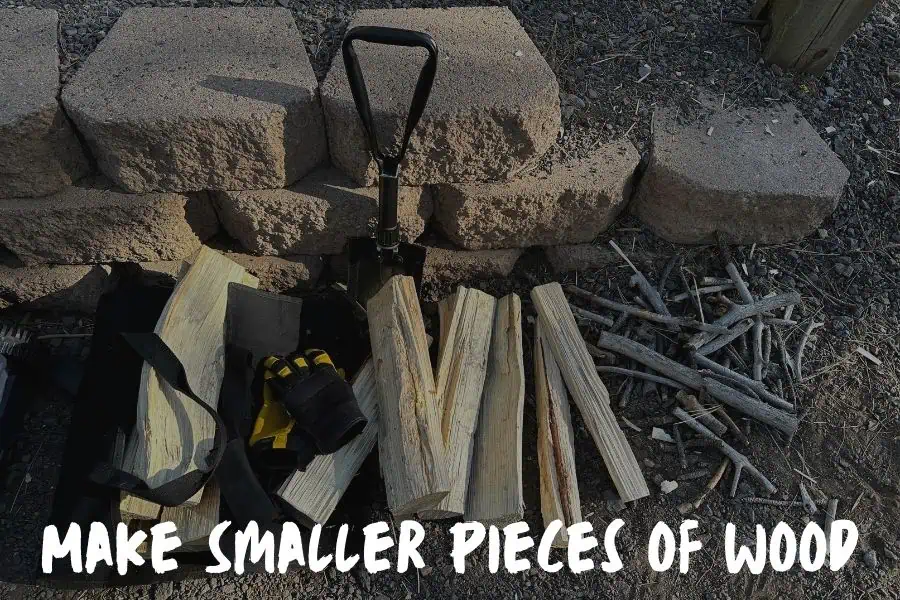
Smaller pieces of wood catch fire way easier than large logs, especially if you’re stuck in damp conditions.
If you see larger logs or branches around your campsite, try splitting them to see if there’s dry sections inside.
If you hit the motherload, you’ll have plenty of wood to get your fire roaring.
If you’re using sharp tools like a knife or hatchet to cut the wood, just be sure to be super careful. It’s always best to designate this task to someone who has done it before.
Once you’ve broken down the wood, you can use the dry pieces to help start your fire.
But don’t throw away the rest of it! If you find wood that’s just a little damp, keep it in a pile to the side. We’ll be able to use the rest of it later.
Use a Tried & True Fire Starting Technique
| The Tent Method | The Cabin Method | The Lean-To Method |
 |  | 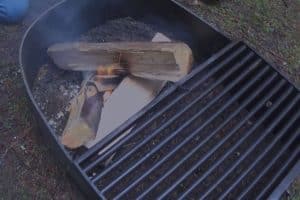 |
Choosing the right fire-building method can make a huge difference in how quickly you can get your fire started. Here are three classic fire starting techniques:
- The Tent Method: Arrange kindling in a tent-like structure by leaning small sticks against each other with a tinder bundle at the center. This structure will make for good airflow, while focusing heat on the driest part of the kindling.
- The Cabin Method: Stack logs in a square formation, similar to a log cabin, with alternating layers. Place tinder and smaller sticks inside the structure, allowing for a steady and controlled burn as the fire grows.
- The Lean-To Method: Prop a larger piece of wood at an angle over your tinder pile, then arrange smaller kindling underneath. This method will shelter your kindling from wind and rain while directing heat up to light the rest of your wood.
Also see: How To Start A Fire With Sticks: 3 Primitive Methods That Work
Use a Firestarter
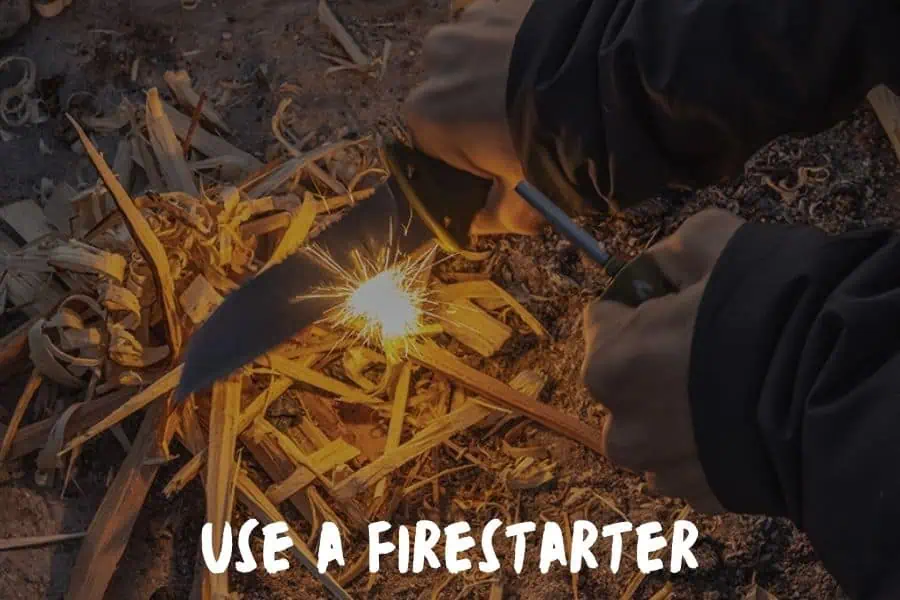
When dealing with wet conditions, a reliable firestarter is a must.
Stormproof matches, a lighter, or a ferrocerium rod can make starting that fire much easier.
Magnesium fire starters are especially useful because they produce hot sparks that start fires, even on the dampest days.
Packing a quality firestarter in your camping gear means you’ll always have a way to get your fire going, no matter the weather.
Also see: How To Use A Fire Starter (An EASY Step-By-Step Guide)
Cover Your Worksite
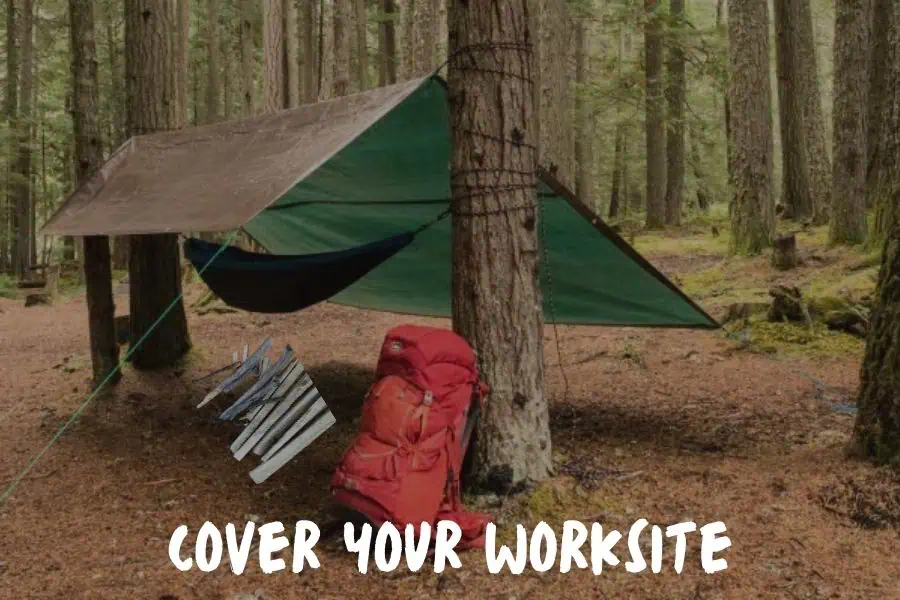
There’s nothing worse than ruining all the dry kindling you’ve gathered.
Once you’ve gathered all the dry wood and tinder you need, throw a camping tarp over your worksite to protect it from any more rain.
We want to keep the dry stuff dry!
This small step can make a huge difference in successfully building a fire in wet conditions.
That camping tarp will keep your firewood and fire-starting materials as dry as possible while you work, leaving you free to focus on getting yourself and your crew warm.
Read: How Much Firewood Do I Need For Camping?
Place Wet Wood Around the Edges
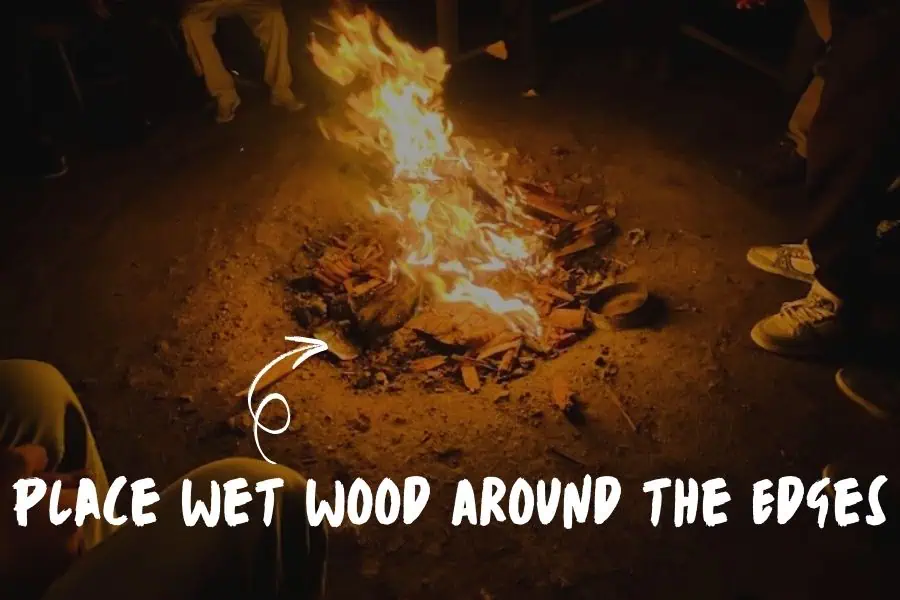
Remember when we told you to keep the damp wood? Once your fire is burning, you can use its heat to dry out the more damp pieces of wood.
Place the wet pieces around the edges of the fire to help them dry out. You’ll see steam rising from them as the water evaporates.
Before long, you’ll be able to add the dried-out wood to the flames.
This trick will help you keep a continuous supply of burnable wood throughout the night, keeping you warm and your fire going strong.
Final Thoughts on Starting a Campfire When Everything is Wet
When you use these tips and tricks, you’ll be on your way to successfully starting a campfire – even when everything is wet.
With the right preparation and skills, you’ll be able to enjoy a warm fire on any outdoor excursion.
And remember, practicing fire safety is essential, so always check local fire guidelines, keep fire safety equipment on hand, and ensure your fire is completely extinguished before leaving your campsite.
Happy camping!


